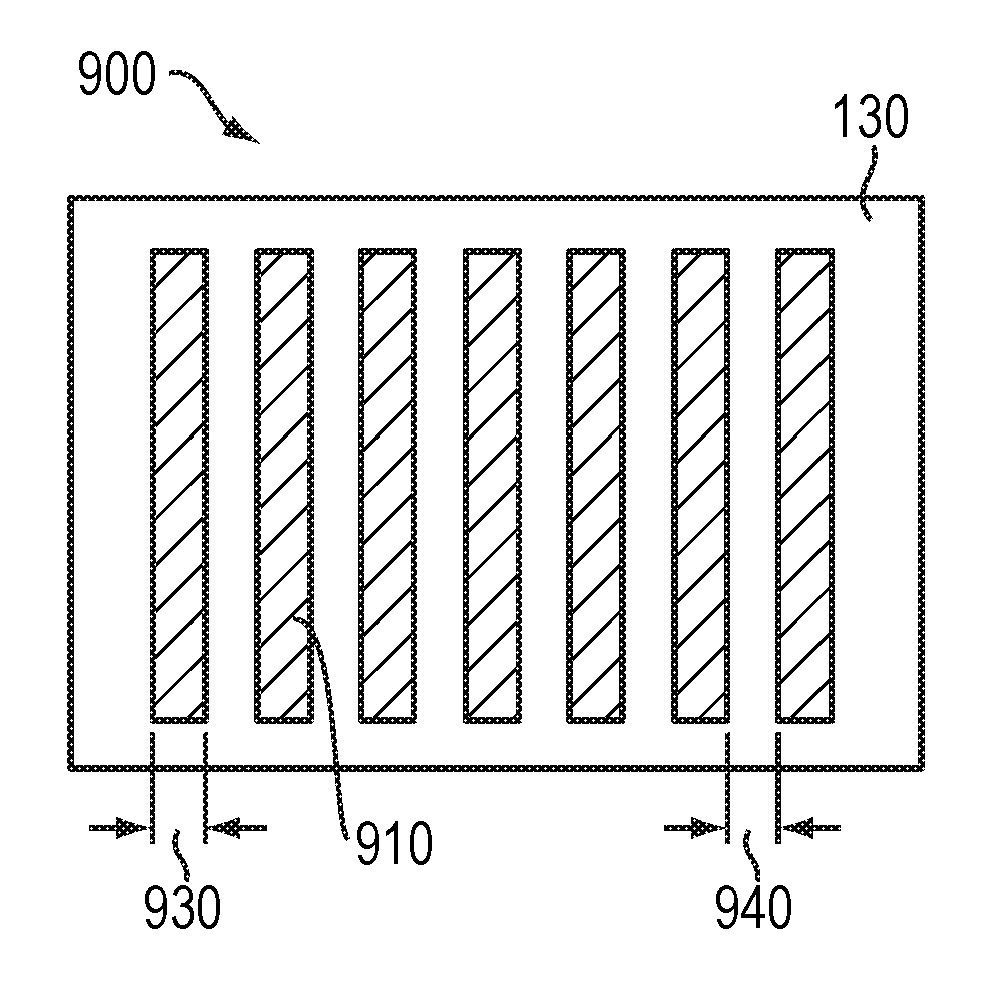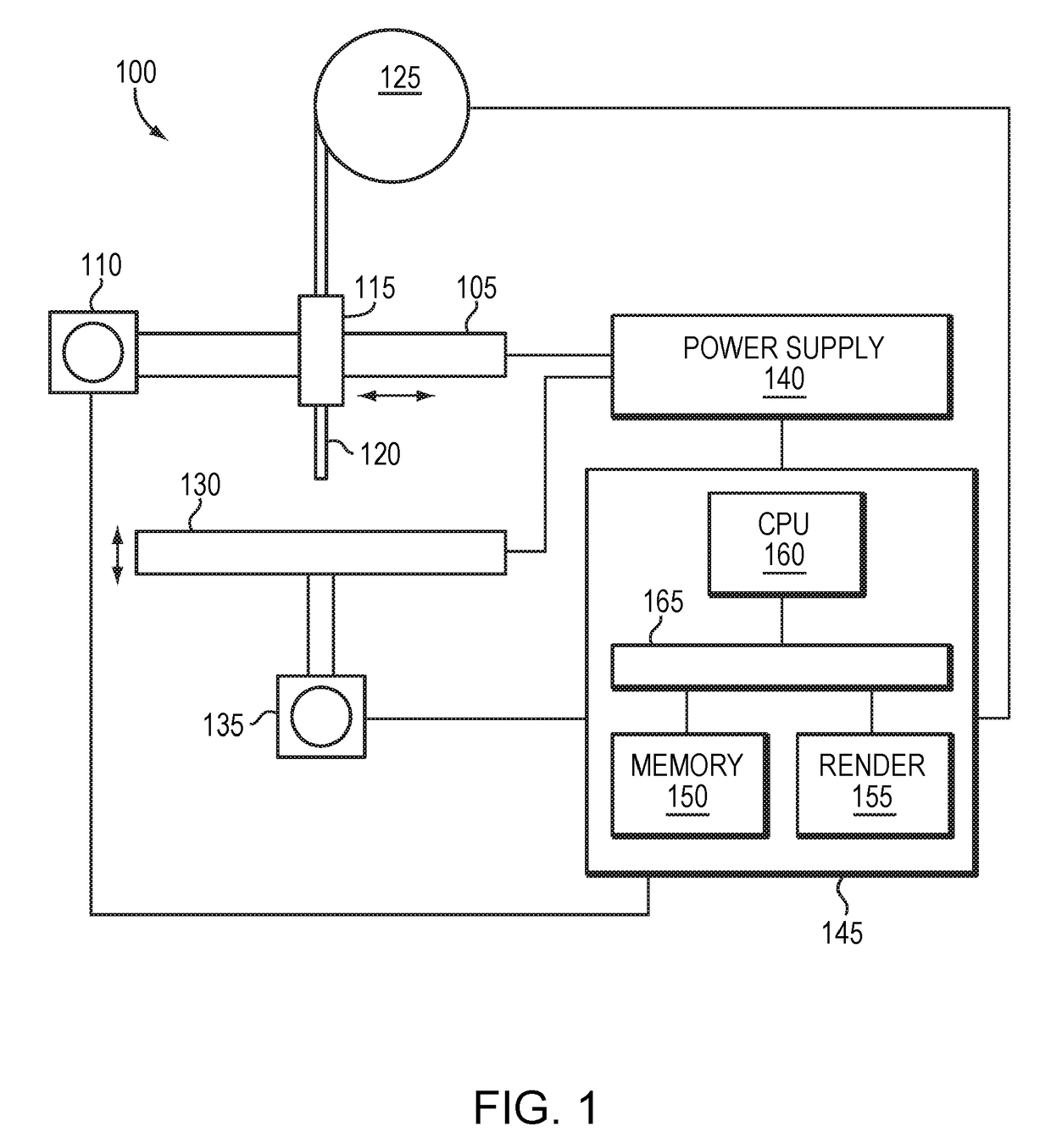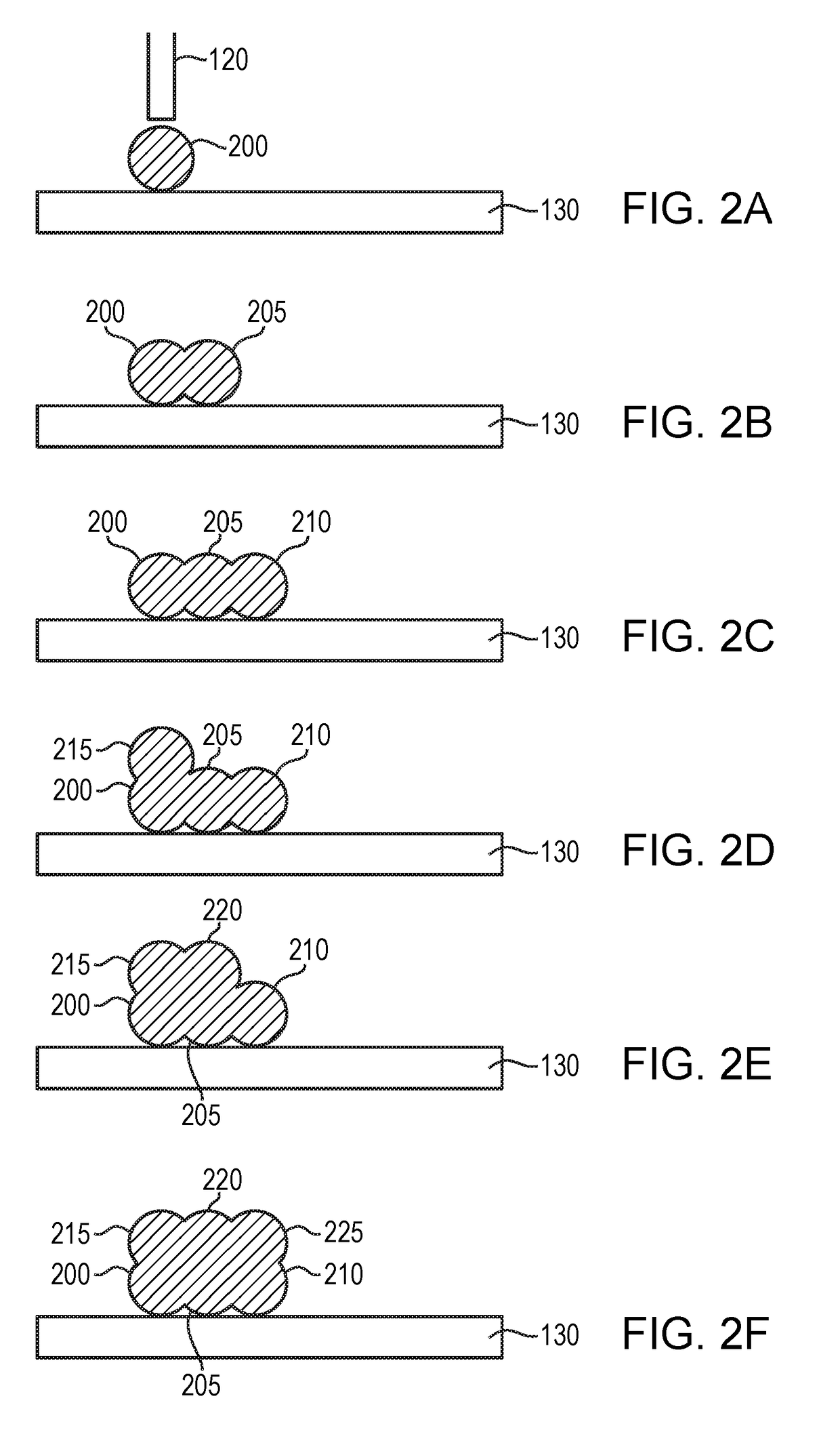Systems for Printing Three-Dimensional Objects
a three-dimensional object and printing system technology, applied in the field of additive manufacturing techniques, can solve the problems of high cost of metal powder production, difficult processing, and inability to meet the requirements of manufacturing, and achieve the effects of reducing the number of, fast fabrication, and easy handling
- Summary
- Abstract
- Description
- Claims
- Application Information
AI Technical Summary
Benefits of technology
Problems solved by technology
Method used
Image
Examples
Embodiment Construction
[0034]In accordance with embodiments of the invention, 3D metal structures may be fabricated layer-by-layer using an apparatus 100, as shown in FIG. 1. Apparatus 100 includes a mechanical gantry 105 capable of motion in one or more of five or six axes of control (e.g., one or more of the XYZ planes) via one or more actuators 110 (e.g., motors such as stepper motors). As shown, apparatus 100 also includes a wire feeder 115 that positions a metal wire 120 inside the apparatus, provides an electrical connection to the metal wire 120, and continuously feeds metal wire 120 from a source 125 (e.g., a spool) into the apparatus. A baseplate 130 is also typically positioned inside the apparatus and provides an electrical connection; the vertical motion of the baseplate 130 may be controlled via an actuator 135 (e.g., a motor such as a stepper motor). An electric power supply 140 connects to the metal wire 120 and the baseplate 130, enabling electrical connection therebetween. The motion of t...
PUM
| Property | Measurement | Unit |
|---|---|---|
| diameter | aaaaa | aaaaa |
| current | aaaaa | aaaaa |
| current | aaaaa | aaaaa |
Abstract
Description
Claims
Application Information
 Login to View More
Login to View More - R&D
- Intellectual Property
- Life Sciences
- Materials
- Tech Scout
- Unparalleled Data Quality
- Higher Quality Content
- 60% Fewer Hallucinations
Browse by: Latest US Patents, China's latest patents, Technical Efficacy Thesaurus, Application Domain, Technology Topic, Popular Technical Reports.
© 2025 PatSnap. All rights reserved.Legal|Privacy policy|Modern Slavery Act Transparency Statement|Sitemap|About US| Contact US: help@patsnap.com



